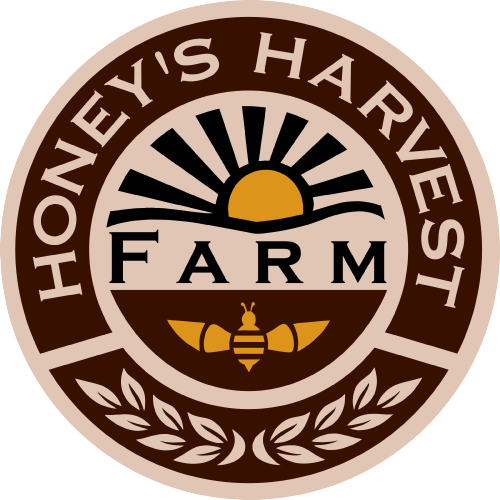Preparing for Sweet Potatoes
It was a warm, sunny day in late April when I drove to Honey’s Harvest Farm to pick up some dirt.
Last fall I prepared a tiny garden in my front yard in which to plant this spring. I didn’t mean for my little patch of earth to be tiny; I’d meant it to be manageable so that I, a beginning gardener, wouldn’t feel too overwhelmed.
However, after hacking apart tough roots and clumps of grass and weeds for an hour or so, I was ready to call my two foot by two foot garden good enough, although I wondered how, if I ever wanted to plant a bigger garden, I was going to drum up the enthusiasm to go through that backbreaking work all over again for a much larger area.
I didn’t know about sheet mulch gardens. Anna Chaney, owner of Honey’s Harvest Farm, did.
In his book The Vegetable Gardener’s Guide to Permaculture, Christopher Shein writes, “Sheet mulching is a technique of covering the ground with layers of organic matter, much like layering a lasagna.” (Shein 114) Anna offered to let me take the materials I needed for my sheet mulch garden from the farm, in addition to supplying me with a sweet potato slip.
Choosing sweet potatoes for my sheet mulching experience was a no-brainer. My family loves them and they are a fiber- and nutrient-rich superfood.
Perhaps you’ve heard of the “Okinawa Diet”. An article called “What Is the Okinawa Diet? Foods, Longevity, and More” by Ansley Hill says, “the Okinawa diet refers to the traditional eating patterns of the people living on the Japanese island of Okinawa. Their unique diet and lifestyle are credited with giving them some of the longest lifespans on the planet.” (healthline.com 2019)
This places Okinawa, which is the largest of the Ryukyu Islands, in one of the world’s five “blue zones.” Blue zones are areas where people live comparatively longer and healthier lives than they do in other parts of the world. (healthline.com 2019)
The Okinawans’ diet is composed mainly of carbohydrate, with smaller amounts of protein and fat, and their main source of carbohydrate comes from sweet potatoes.
An article from the website Down to Earth explains that Okinawan sweet potatoes’ main virtue is anthocyanin, an antioxidant that produces the vibrant purple color of their flesh. (downtoearth.org 2020).
According to Hill, “Okinawa is home to more centenarians–or people who live to be at least 100 years old–than anywhere else in the world.” (healthline.com 2019) Although purple sweet potatoes aren’t the sole factor responsible for the Okinawans’ long life, they do comprise a large part of the diet and contribute a host of benefits.
If you can’t get your hands on purple sweet potatoes, regular sweet potatoes are also well worth eating for their nutritional value. An article from draxe.com by Rachael Link enumerates their astounding benefits: “Sweet potatoes … contain a good amount of fiber as well as vitamin A, vitamin C, manganese and … riboflavin, phosphorus, vitamin E, vitamin K, calcium and iron.” (draxe.com 2017)
Sweet potatoes contain roughly 438 percent of the daily recommended amount of vitamin A, which helps build immunity by assisting the growth of immune cells that prevent illness and infection. Both vitamin A and beta-carotene, which is an antioxidant found in orange sweet potatoes, play crucial roles in eye health. Antioxidants fight free radicals that can damage our tissues and brains.
Fiber allows sweet potatoes’ natural sugars to be released more slowly into our bloodstreams, meaning that we don’t experience blood sugar spikes and crashes when we eat them. Fiber also takes a while to digest, meaning that it keeps us full and satisfied for a long time. (draxe.com 2017)
All that’s to say, at Honey’s Harvest Farm, we like sweet potatoes. I chose to plant a Japanese sweet potato, which is not the same as the Okinawan purple sweet potato: Japanese sweet potatoes have bright red skin and intensely sweet, slightly rose-flavored white or yellowish flesh, while Okinawan sweet potatoes have a darker skin and intensely purple flesh.
When I got to the farm, I helped Anna and her son Connar load several trash cans and large, round plastic bins full of dirt, compost, and wood chips. We found lots of wine cap mushrooms growing on one area of the wood chip pile, and Connar explained that the mycelium, or fungi threads, that had grown through the chips would help feed the soil in my garden and make a richer environment for my sweet potato plant.
We drove back to my house and dumped our loads directly on my lawn: sheet mulching! No grass-wrestling required!
I would plant the sweet potato a couple weeks later. In the meantime, the layered ingredients sat on the lawn, cooking in the sun, sprinkled by the rain, getting ready for the next stage of the process.
References:
Hill, Ansley. “What Is the Okinawa Diet? Foods, Longevity, and More.” April 16, 2019. https://www.healthline.com/nutrition/okinawa-diet. Accessed May 28, 2020.
Link, Rachael. “Sweet Potato Nutrition Facts and Benefits.” December 17, 2017. https://draxe.com/nutrition/sweet-potato-nutrition-facts-benefits/. Accessed May 28, 2020.
Shein, Christopher. The Vegetable Gardener’s Guide to Permaculture. 2013.
Ternes, Tracy. “The Okinawan Sweet Potato: A Purple Powerhouse of Nutrition.” Updated May 27, 2020. https://www.downtoearth.org/health/nutrition/okinawan-sweet-potato-purple-powerhouse-nutrition. Accessed May 28, 2020.







